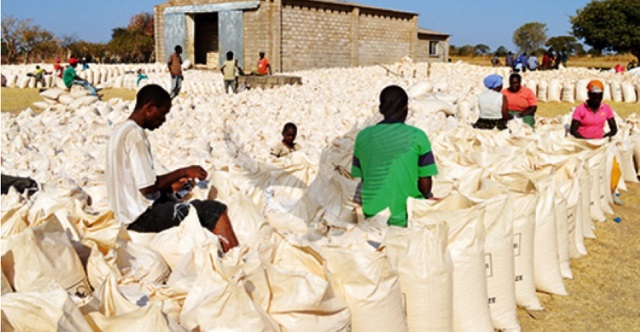
13-point farmers plan to attain high product quality, wealth creation, trade harmony in EAC region
COMMENT | DICK NUWAMANYA KAMUGANGA | The East African Community (EAC) regional maize trade is approximately 1.5 million Metric Tons per annum valued at US$ 260 million. Uganda is a leading net maize exporter in the region. Its largest maize markets are Kenya and the Sudans. Kenya is a net leading importer of maize in the region.
In the EAC regional trade integration context, maize is better produced by Tanzania and Uganda and Kenya buys cheaply from both countries. Therefore, there are mutual trade gains for each member state in the maize regional trade that fosters regional efficient allocation of resources and pro-people centered integration through both agricultural and industrial intra-regional value chains. When regional maize trade is disrupted, EAC economy overall loses; the regional GDP goes down and regional wealth and welfare declines. This is bad economics.
Recently, Kenyan authorities disrupted the regional maize trade citing poor quality of maize from Uganda and Tanzania. A number of stakeholders came forward with varied propositions including both political and technical interventions. In this article, as a representative of the farmers, I list a 13 point plan with a farmer’s perspective.
As a representative of the affected farmers in this development, I propose a 13 point plan or farmer led program to integrate smallholder farmers within the national, regional and international maize value chain.
- Use a farmer led digital platform to mobilise, organise, empower and coordinate and manage Maize Value Chain actors
Poor quality maize aflatoxin contaminations are value chain actor driven. From the farm to the trader these actors can be mobilised, organised, empowered and coordinated to produce and trade good quality maize. Available digital solutions allow this to be done cheaply and accurately. The Uganda National Farmers Federation (UNFFE) through its farmer owned and led UNFFEICT4FARMERS can lead the process of identifying, registering, profiling and digitising all the maize value chain actors –from pre-planting to post harvesting, trading and logistic companies. Farmers, input traders, output traders, post-harvest handlers, logistical companies and financial companies in the maize value chain can be digitised and coordinated on our digital platform. Digitising the maize value chain ecosystem will help ease tracing, regulation, planning, monitoring and controlling both quality and quantity of regionally produced and traded maize and UNFFE is ready to lead this once supported by other partners.
- Farmer Empowerment in national, regional and international maize standards
Farmers are proposing a bottom-up empowerment strategy of farmer to farmer, farm to farm, village to village to national level standards training in national, regional, and international trade standards in maize and other tradeable commodities in the framework of NDP III. There are approximately 1.5 million farmers in the maize subsector in the country. It is possible to target training a village level network of farmers to be standards experts reaching 300,000 farmers per year.
- Establish a multistakeholder national Maize Value Chain Platform
National dialogue on value chains development to meet international trade standards is necessary. Uganda National Farmers Federation can lead the formation of this platform. This platform would bring together the farmers, scientists, government agencies, Uganda Bureau of Standards etc. This platform would bring actors together on quarterly basis to design strategic responses in the maize value chain development.
- Develop deep partnerships to support Maize Value chain
Maize is a development value chain. Proper maize trade boosts many household incomes, food security, and employment and generates foreign exchange. Partnerships between resident development partners and external partners is very critical. During the development of the Plan for Modernization of Agriculture (PMA), partners coordinated under a donors common basket to coordinate resources going into agriculture sector development. Similar mechanisms are applicable to optimise the potential of maize value chain.
- Establish a Maize Value Chain Development Fund
Maize quality at farmer level is largely influenced by farmers’ socio-economic conditions. These farmers have liquidity constraints and will sell their premature maize to whoever shows up with any cash amounts regardless of whether they make a loss or not. This fund combined with micro-warehouse receipt system would reverse the fortunes of poor farmers who are vulnerable to middlemen and bring improve the country’s maize standards. UNFFE can manage this fund and certified community micro-warehouses.
- Promote Farmer led micro-warehouse receipt system
The return of traditional granaries may not happen. These can be replaced by community owned and quality certified stores at village level or trading centre and supervised by the UNFFE. Certified village stores can store up-to 100-1000 metric tons of the grain. Farmers empowered to harvest mature maize would deliver their maize at the community store and receive a receipt which would serve multiple purposes, including as a collateral for accessing resources /credit from the Maize Value Chain Development Fund only accessed by farmers who deliver quality certified maize.
 The Independent Uganda: You get the Truth we Pay the Price
The Independent Uganda: You get the Truth we Pay the Price


